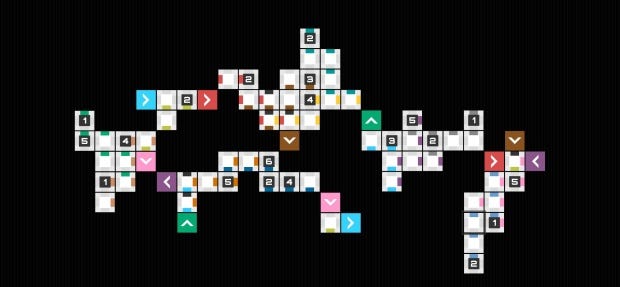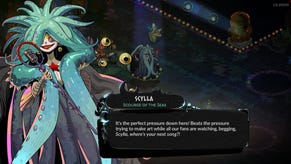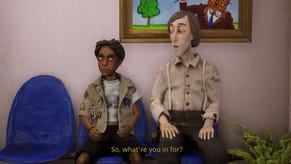Wot I Think: Dynetzzle Extended
It's extra-hip to be a cube.
Dynetzzle Extended may be the worst name of a game I've ever seen, but the puzzle is interesting. I took a look at the free 10 level version back in March, and now the full 25 level version is released, for a mere single dollar. Does it expand nicely into a larger puzzle game? Here's wot I think:
I got an A at GCSE Maths. (Then a D at A Level.) But I am still apparently incapable of remembering that 5+1 doesn’t equal 7. This is something I’ve learned while playing Dynetzzle Extended, a 25 level version of a smaller game that was released in March. A far better version. With the same terrible name.
The concept is pretty much an instant get: six-sided dice unfolded into nets, and you have to correctly number the sides. As you already know, opposite sides on a die add up to 7, so with this information, and some mental wriggling as you attempt to restructure the cubes in your brain, you can figure out what’s supposed to go where. Then things are complicated by interlocking nets, multiple overlapping dice that start to influence the numbers on each other. And in this commercial version, even more screwing up your eyes in confused concentration as you have to mentally realign nets according to indicating arrows.
It’s a puzzle concept that definitely works, and is certainly distracting, but always feels like it’s falling just short of being properly good. I’ve spent a happy morning working my way through the far trickier puzzles that appear after the initial 10, eventually becoming a properly tough challenge by the final five. But at the same time, I’ve felt like it’s lacking something special. It certainly hasn’t gripped me like the wonderful Hexcells, but it’s also failed to quite deliver that sense of satisfaction that comes with something like a Kakuro or Picross. While all those puzzles work by the same theory – there’s a correct, inevitable path through, and you’ve got to follow it – here in Dynetzzle, it lacks moments when you feel inspired. It lacks elaboration of rules, the moments when you can learn new techniques. It remains, throughout, about spotting which opposite-sided number you can put in now.
It’s presented simply and smartly, the screen always crisp and clear, and that makes a big difference to how appealing it remains to play, despite an unavoidable mundanity. Everything is operated with the left mouse button, nothing is needlessly cluttered. The only issue is some broken English in the brief explanatory texts, but they’re no obstacle.
What is an obstacle is my brain’s insane refusal to remember that I’m trying to get to 7, not 6, when adding the sides together. “BUT DICE HAVE SIX SIDES!” it keeps shouting, like the embarrassing idiot child it is. So the most common way I go wrong is matching 5s and 1s, and then realising I have to start the entire puzzle again because I’m so thick. See, even when I write that I think, “5s and 1s – what’s wrong with that?” Argh!
I so dearly wish creator Vishnu Vadakke Pariyarath would have changed the name with this for-sale version. I’ve had to check back every time I’ve written the damned thing, and yet again now when checking the price. A game I’m currently playing, and currently writing about, and I still can’t remember it, let alone how to spell it. Dynetzzle, by the way, as you’ve likely forgotten as well.
It’s a mere dollar, and at that price almost anything can be forgiven. And it’s the case here that there’s very little that needs forgiving. It’s a smartly put together, completely original puzzle idea, and I’ve enjoyed plugging away at it. It’s never going to stick in my mind, and certainly not obsess me in the all-encompassing way Hexcells did, but for a buck you could do a lot worse.










